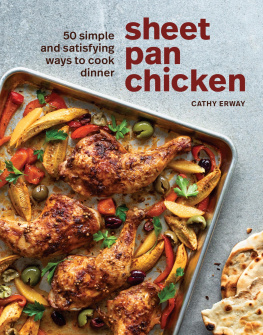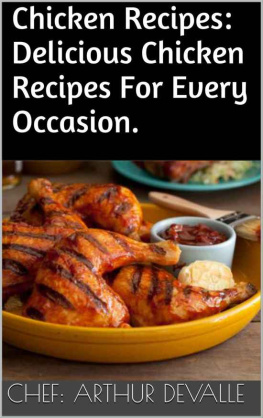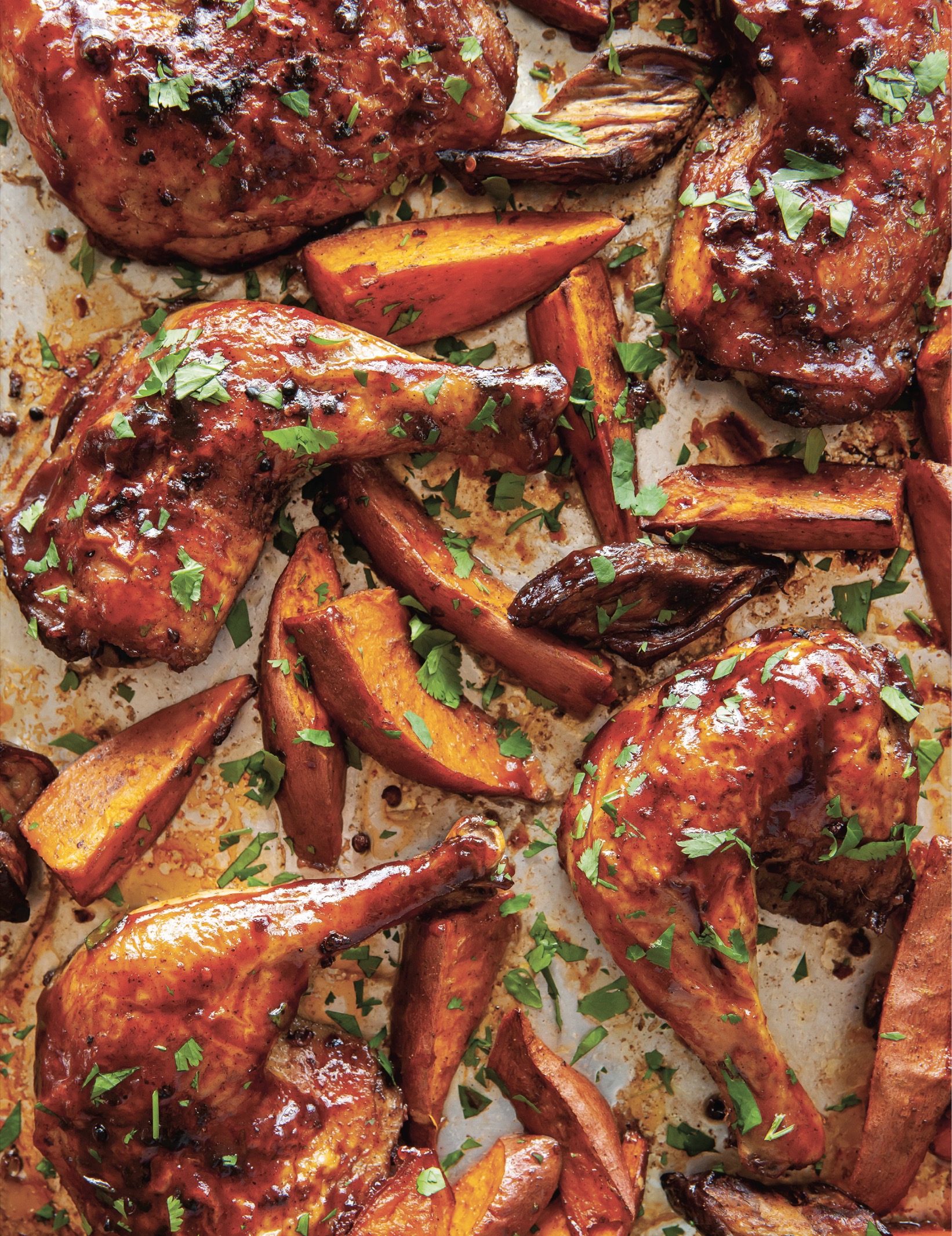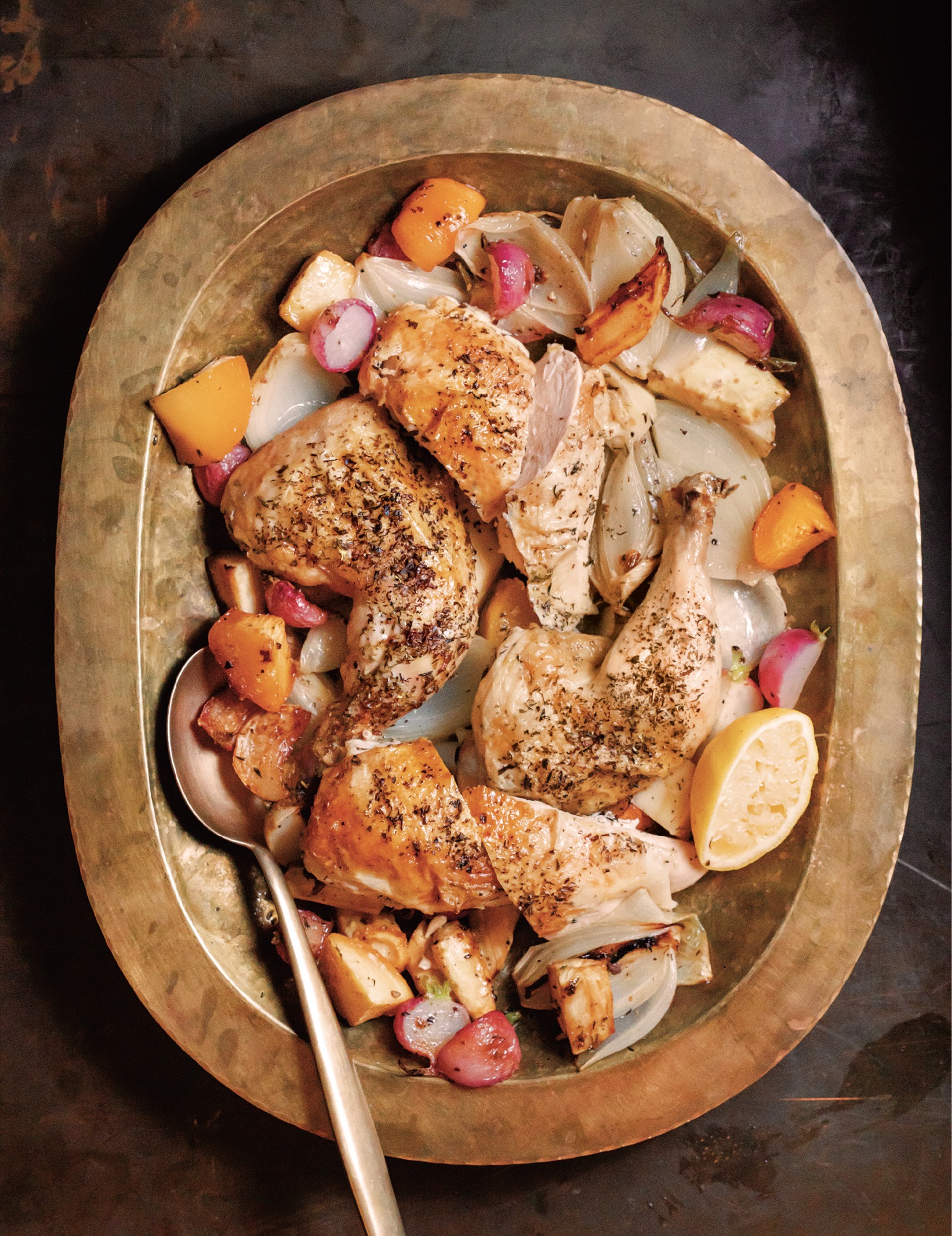Chickens are not solitary creatures, and this book was far from a solo effort. I had the great privilege of working with terrific editors across both TASTE and Ten Speed: Matt Rodbard, Talia Baiocchi, and Kim Keller. Thanks to Lizzie Munro, photographer, and Pearl Jones, food stylist, for creating such chicken-y masterpieces from these recipes. And to Betsy Stromberg for her creativity with them as the book designer.
Thanks to Lorena Jones, editor in chief at Ten Speed Press, for the opportunity both to write this book and to approach sheet pan chicken from a multicultural perspective. I am so indebted to and inspired by the generous chefs and food writers who contributed a recipe: Melissa Clark, Jenn de la Vega, Von Diaz, Pati Jinich, Yewande Komolafe, Preeti Mistry, Leela Punyaratabandhu, and Louisa Shafia.
To all my friends who helped test-drive and eat chicken recipes, thank you so much for indulging me (and yourselves). To my husband, Olen, for helping me with everything from dishwashing to medical support, like that time I burned all my fingertips.
Thanks to my mom for teaching me not just to eat every grain of rice in my bowl but to suck all the skin and cartilage off the chickens bones. Thanks to my dad and grandparents for sharing their love of chicken with me as welloften with Cornell sauce. And thanks to all the home cooks Ive gotten to know through food and other collaborative events. It makes home cooking much richer and more exciting when you can reference various experiences, conversations, and people with any given dish or ingredient. Im so grateful to incorporate a grain of salt from everyone Ive met.
on the fly
I tend to think of filling a sheet pan to the brim with cut vegetables and spiced and marinated chicken pieces as making one big, lazy stir-fry. But instead of stirring, the ingredients are left to roast, sweating juices and shrinking as they concentrate in flavor. This (mostly) hands-off bliss while you wait for the golden reveal can be used to tackle a few other thingslike doing the laundry or retrieving all the dog toys from under the furniture. The recipes in this section have been created to be quick and simple, championing instant seasonings rather than overnight marinades. Its my hope that with the recipes in this section, you can get a feel for the rhythms and wisdom of roasting chicken with many types of ingredientslike alternative winter squashes, root vegetables, juicy fruits, and alliumsand feel empowered to wing it with other ingredients that come your way.
weeknight spatchcock chicken
with lemon and root vegetables
It might sound newfangled and a little funky, but spatchcocking is essentially the same thing as butterflyingand whether youre talking a whole chicken, a filet, or a leg of lamb, that means splitting it to lie flat, like an open book. For chicken, this involves cutting out the backbone first, which is the only tricky part, but for your (or your butchers) efforts, youll greatly reduce the time the chicken takes to cook. Thats the raison dtre of spatchcocking. Ill admit, the chicken looks like its doing some crazy yoga pose, especially with its wings tucked behind its back. (I think its doing Fixed Firm Pose or Supta Vajrasana in Bikram yogajust Google it.) But splayed over a sheet pan, surrounded with a few chunky potatoes and roots to absorb its juices, itll cook beautifullyand quickly, making it weeknight-worthy.
Serves 4
1 lemon
1 (3-pound) whole chicken
About 1 pounds assorted root vegetables, such as unpeeled carrots, parsnips, turnips, rutabaga, radishes, beets, or peeled celery root, or go ahead and just use peeled potatoes or sweet potatoes
2 small to medium onions, quartered
4 tablespoons extra-virgin olive oil
2 teaspoons salt
1 teaspoons black pepper
2 tablespoons herbes de Provence or a combo of dried herbs like oregano, rosemary, sage, and thyme (see )
About cup chopped fresh flat-leaf parsley leaves or other fresh herbs (thyme, rosemary, tarragon, dill, chervil, oregano, or anything you like; optional)
Preheat the oven to 450F.
Zest and halve the lemon and set both aside. Remove the neck and gizzards from the chickens cavity and discard (or save them for making stock or dog treats later).
Spatchcock the chicken: place it breast-side down on a cutting board. Using kitchen scissors (if you have a cleaver or sharp chefs knife, you can use thatcarefullyinstead), snip along each side of the spine to remove it. Flip the chicken breast-side up, place your palm on the center of the breast, and push down until you feel the breastbone crack. This should help the chicken lie flat. Gently slide your finger underneath the skin of the breast to detach it from the meat a bit (this will encourage the skin to crisp up in the oven). Tuck the wing tips underneath the wings to prevent them from burning. Squeeze the juice from one lemon half all over the chickens surface and set it aside to dry a bit while you prepare the rest of the ingredients.
Wash and dry the root vegetables well and cut them into 1-inch chunks. Combine the vegetables, onions, 2 tablespoons of the olive oil, teaspoon of the salt, and teaspoon of the pepper on a sheet pan and spread them in an even layer.
Rub the remaining 2 teaspoons salt and 1 teaspoon pepper all over the skin and the underside of the chicken. Rub just the skin with the remaining 2 tablespoons olive oil and the herbes de Provence. Place the chicken skin-side up on top of the vegetables on the sheet pan. Roast until a kitchen thermometer inserted into the thickest part of a thigh registers 160F, 40 to 50 minutes, rotating the pan every 20 minutes and tossing the veggies around in the pan if they are becoming too crisp in some parts.
Remove the pan from the oven. Squeeze the remaining lemon half all over the chicken and vegetables, sprinkle with the lemon zest and fresh herbs (if using) and serve.
bang bang crispy chicken
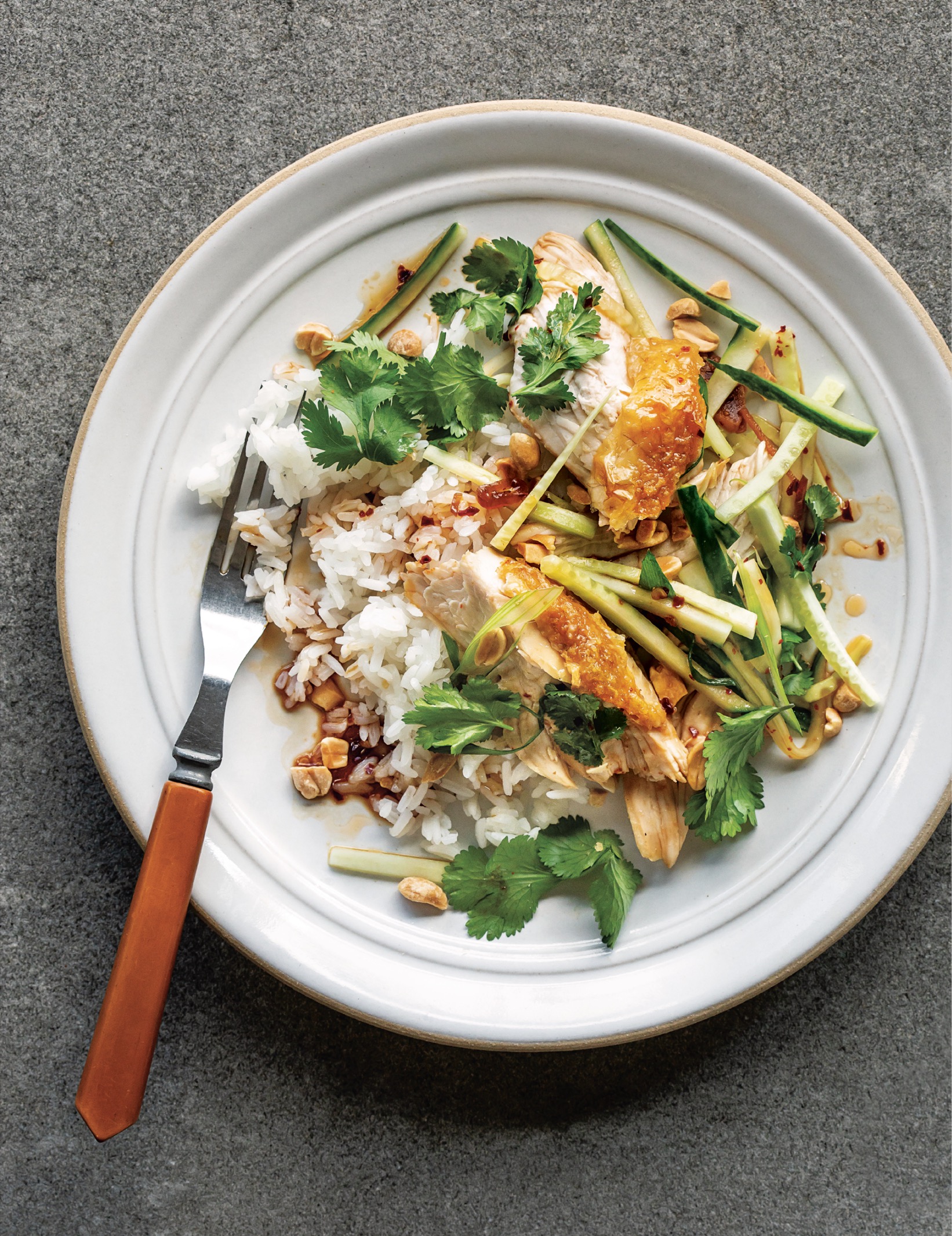
Sichuan cuisine is all about bringing big flavorswith dishes like kou shui ji, or mouth-watering chicken (sometimes translated as saliva chicken because of the way its numbing-hot spices make you drool) and guawei ji, or strange flavor chicken (again, a literal description of its curiously delicious spices). Another amazingly named chicken dish from Chinas Sichuan Province is bang bang chicken (sometimes translated as bon bon chicken), but this time, the name describes the wooden stick used to bang on the chicken after its been cooked. Why bang on the chicken? It will help you quickly tear the chicken into delicate shreds. That shredded meat is placed in a serving dish, and a tangy, spicy, and slightly sweet sauce is poured over it, working its way into all the nooks and crannies and getting totally absorbed by the chicken. Bang Bang Chicken is typically made with poached or steamed chicken breasts. And sure, you could substitute boneless, skinless chicken breasts here, but Id recommend any bone-in, skin-on chicken pieces, so youll get crispy skin as well as juicy meat and drippings to add to your sauce.

